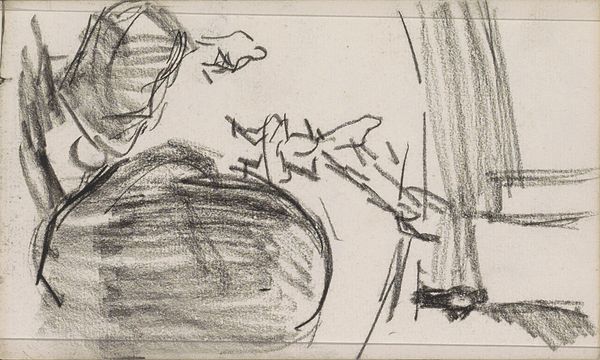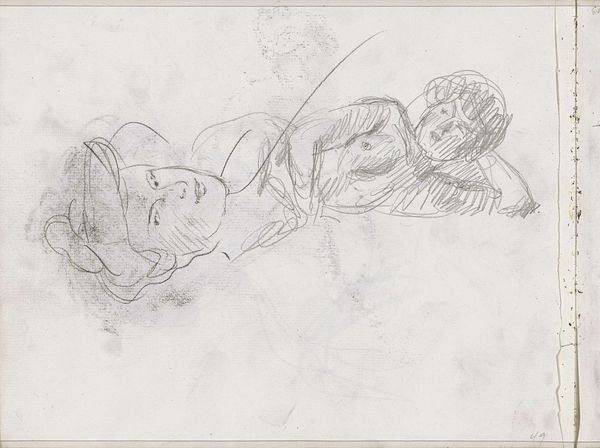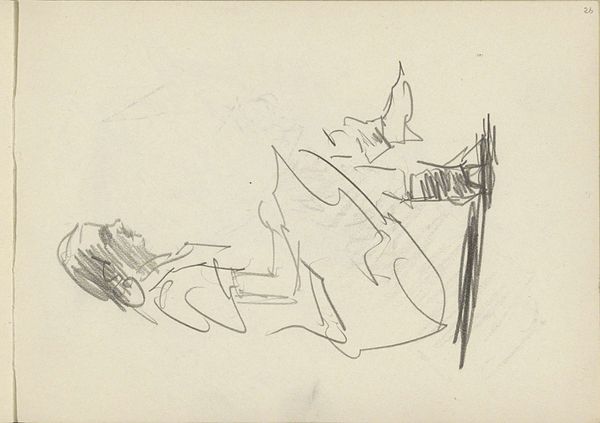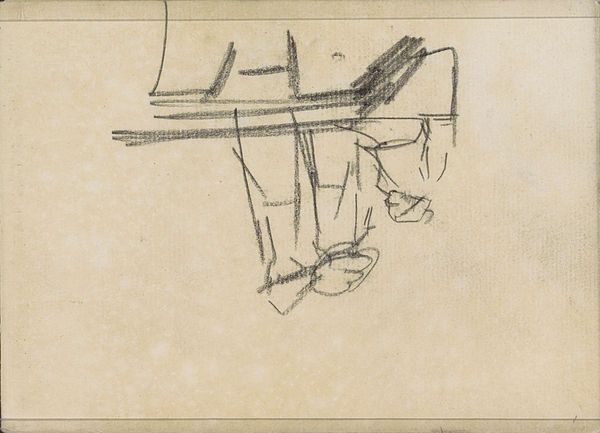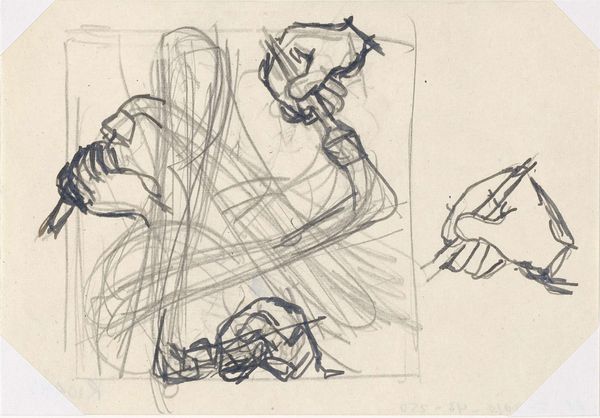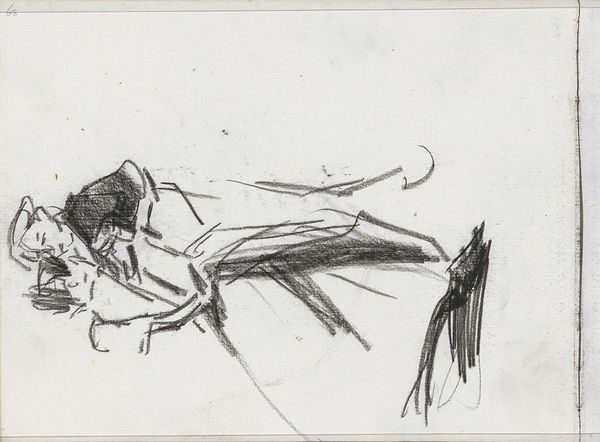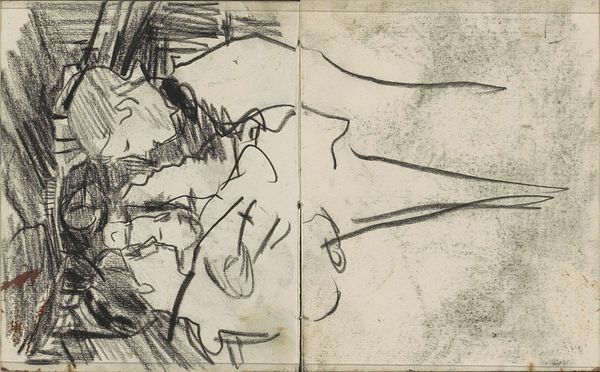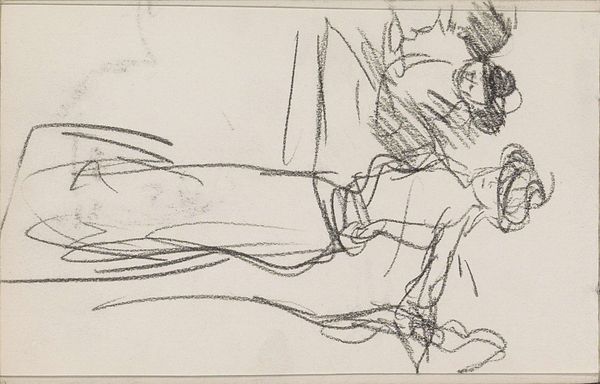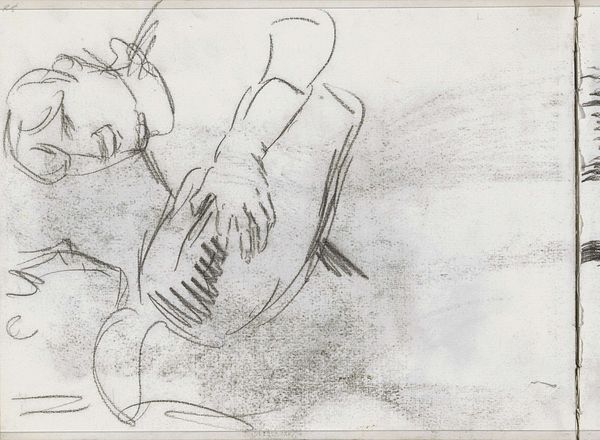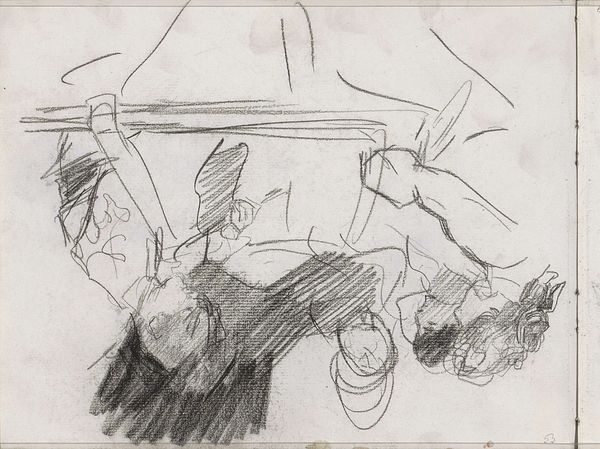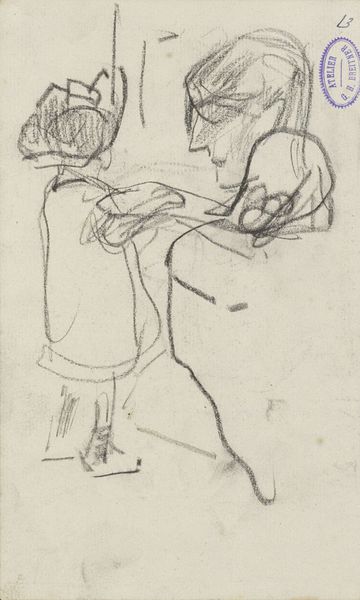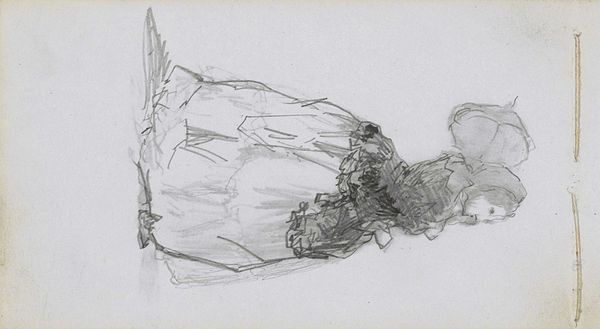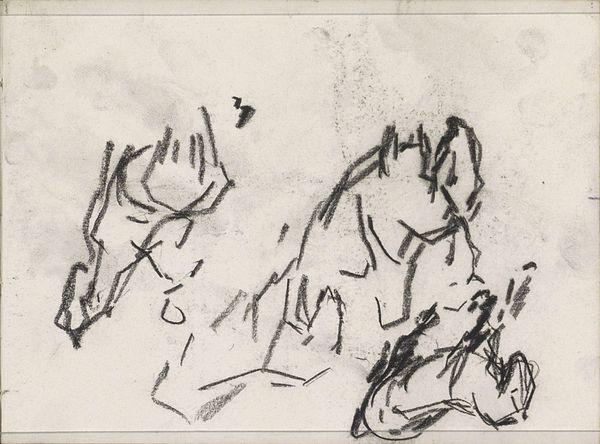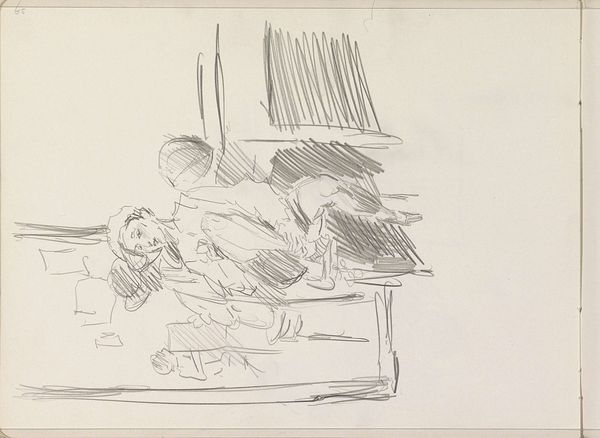
Copyright: Rijks Museum: Open Domain
Curator: This drawing by Isaac Israels, dating roughly between 1875 and 1934, captures two girls both on and in front of a chair. It’s currently held in the Rijksmuseum collection. Editor: My immediate sense is one of spontaneity and fleeting observation. The quick, light pencil work captures the girls with minimal detail, yet it still conveys a sense of youthful energy. Curator: Exactly! Israels was deeply embedded in the artistic circles of his time, keenly aware of impressionism and its focus on the immediate experience. Drawings like this offer insight into his process and the casual intimacy of his subjects. Editor: The composition is striking; the chair dominates the frame with its stark lines, while the figures almost melt into its form. Did Israels typically prioritize form in this way? Curator: Well, we know Israels was influenced by the Hague School, moving away from conventional portraiture and documenting ordinary life. He wasn't simply recording appearance, but instead evoking a sense of modern life as lived and witnessed, an exploration of modernity unfolding. Editor: There is a certain vulnerability in the incomplete rendering, particularly how one face seems almost like a ghost looking from over the subject's shoulder; what does it represent in this candid depiction? Curator: It's open to interpretation! This unrefined quality really aligns with Impressionism's departure from academic finish. He’s showing us his immediate vision, inviting the viewer to partake in it, maybe capturing the quick social changes felt in Amsterdam during this period. Editor: It truly invites close inspection, but leaves one wanting more. Curator: Yes. His works were responses to shifting urban experiences, and this very quick sketch tells of an artist attuned to capturing fleeting encounters in equally rapid fashion. Editor: It speaks volumes about observation itself. Curator: Indeed, the politics of seeing and how they can influence what one records.
Comments
No comments
Be the first to comment and join the conversation on the ultimate creative platform.
